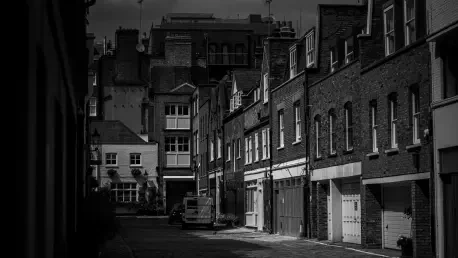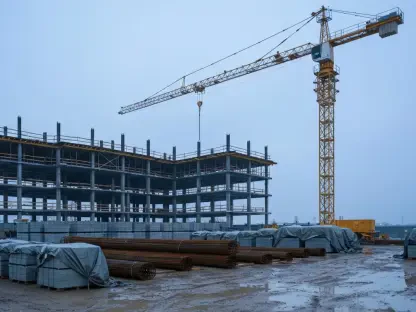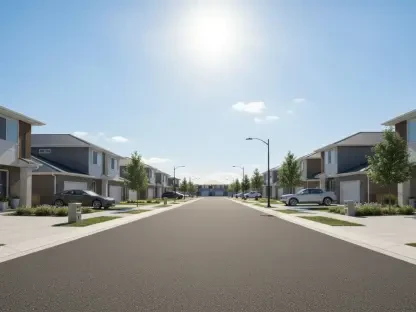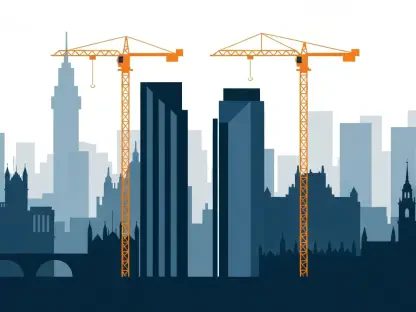In the realm of urban regeneration and the intersection of design and technology, few projects stand as emblematic as the development at Sheffield’s West Bar. This interview dives into the intricacies of the project with Luca Calaraili, a seasoned expert in construction and architecture. As we unpack the significance of this game-changing development, we explore its impact not just in terms of infrastructure but on the entire community fabric.
Can you provide an overview of the build-to-rent scheme in Sheffield’s West Bar and its significance to the community?
The build-to-rent scheme in West Bar, known as Soho Yard, is a transformative development for Sheffield. It offers 368 residential units as part of a larger £300 million mixed-use project. This initiative is significant because it provides much-needed housing within the city while enhancing community life. By integrating work and leisure spaces, it turns the area into a lively community hub where people can genuinely live, work, and play, redefining the local urban landscape.
How does the completion of Soho Yard contribute to the overall mixed-use development in West Bar?
Soho Yard’s completion is pivotal because it’s not just about residential space; it’s an integral component of a broader mixed-use strategy. Alongside the residential units, there’s the development of Grade A office buildings and public squares, creating a balanced ecosystem where residential and commercial needs coexist. This kind of integration is crucial for fostering economic vibrancy and providing comprehensive public amenities.
What types of residential units are available at Soho Yard, and what amenities can residents expect?
The residential units at Soho Yard come in a range of sizes, including one-, two-, and three-bedroom apartments. But what’s really compelling are the amenities, designed for an improved living experience. Residents have access to a gym with a yoga studio, private dining areas, and multiple roof terraces. There are also co-working spaces, a games room, and 24-hour onsite support, ensuring a lifestyle that’s as functional as it is enjoyable.
How does the design of Soho Yard integrate with the historical significance of the area, particularly the site of the ‘Soho wheel’?
The design of Soho Yard thoughtfully pays homage to its industrial past, particularly the historical ‘Soho wheel.’ By situating the development near the River Don, where the famous wheel once powered grinding machinery, the project bridges past and present. The architecture integrates landscaped spaces and gardens, subtly reminding residents of the area’s post-industrial transformation while enhancing the natural environment.
Can you explain the impact of this development on job creation and economic growth in Sheffield?
This development is a major catalyst for economic growth in Sheffield, expected to support up to 8,000 new jobs. The introduction of substantial office spaces attracts businesses that need Grade A workspace, facilitating economic activities that extend beyond the immediate project. Long-term, these changes promise to foster a robust local economy, benefiting not just new residents and businesses but the city as a whole.
What role does Legal & General play in the operation and management of Soho Yard?
Legal & General plays a central role in both financing and managing Soho Yard. As part of their ‘Build to Rent – Homes for Life’ portfolio, they ensure these apartments are not just residential spaces but are sustainable, long-term living environments. Their involvement guarantees a commitment to ongoing quality and community engagement, making them a key partner in elevating the area’s living standards.
How has the development addressed the need for Grade A office spaces in Sheffield, and what benefits do these spaces bring to local businesses?
The development addresses the critical shortage of Grade A office space by offering a substantial 500,000 sq ft of workspace. For local businesses, this is a game-changer, offering modern facilities that boost productivity and attract talent. It enables businesses to thrive in a contemporary environment, fostering innovation and competitiveness in the local marketplace.
Could you elaborate on the public amenities and public realm being incorporated into the West Bar development?
West Bar’s design extends beyond residential and commercial buildings to include rich public amenities. This includes a new public square, multi-story car parking, and landscaped areas that serve as shared communal spaces. These elements are crucial for creating an attractive, vibrant public realm that enhances social interaction and improves the quality of life for the community at large.
How does the partnership between Urbo Regeneration, Peveril Securities, and Legal & General contribute to the success of the project?
The synergy between Urbo Regeneration, Peveril Securities, and Legal & General is instrumental. Each partner brings unique strengths: from strategic funding to innovative design and effective property management. This collaboration ensures a multifaceted approach to urban regeneration, focusing on both the immediate project needs and long-term community benefits, guaranteeing the project’s overall success.
What measures are being taken to ensure long-term sustainability and community engagement in the West Bar development?
The development places a heavy emphasis on sustainability and community engagement. This includes comprehensive strategies for reducing the environmental impact, such as using energy-efficient designs and ensuring ample green space. Community engagement is fostered through public spaces and amenities that invite continuous resident interaction, making it a vibrant and enduring part of the area.
How does this development fit within Legal & General’s broader vision and goals for real estate investment and regeneration?
This project aligns perfectly with Legal & General’s broader real estate objectives, which focus on meaningful regeneration projects that drive social and economic improvements. By investing in mixed-use developments, they aim to create sustainable urban environments that support long-term community growth and resilience, reflecting a commitment to enhancing modern urban living.
How have the local residents and businesses reacted to the transformation brought by this development, and what feedback have you received?
The reaction from both residents and businesses has been overwhelmingly positive. Locals appreciate the thoughtful blend of old and new, and the influx of new amenities and job opportunities. Businesses are particularly excited about the new office spaces and the vibrancy it adds to the area. Overall, the feedback emphasizes a shared enthusiasm for what this transformation means for Sheffield’s future.
Do you have any advice for our readers?
When considering urban development, it’s important to look beyond the immediate financial returns and focus instead on creating sustainable communities that can adapt and thrive. Projects like West Bar exemplify the potential for integrated design and community engagement to generate meaningful long-term success, pointing the way towards innovative urban living solutions that truly benefit all stakeholders.









